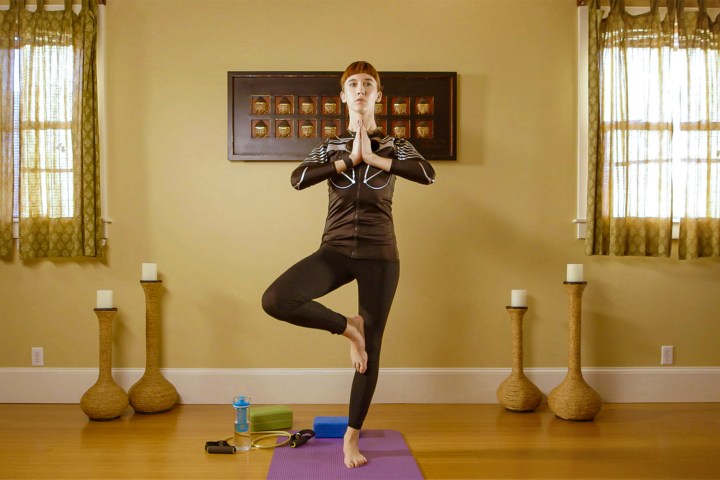
Tersa — home steam-cleaning system
There are few things more mundanely embarrassing than a wrinkled shirt. Imagine getting up in front of the executives at work to deliver a presentation, only to notice them snickering. You look down and realize your shirt has the texture of a human brain. The shame! Normally, you should iron your clothes, but this can be time-consuming, and there’s always the chance you might burn your threads. The creators of the Tersa aim to eliminate the stress of ironing with a fully-automated steam-cleaning system.
A slender box that you can mount on your wall, the Tersa steam cleans and presses your clothes, and the creators claim the process takes no more than ten minutes. Not only will the device clean your clothes, but it will even leave them smelling good. Simply hang your item in the machine, close the door, plug in one of the proprietary fragrance pods, and press the button.
E-skin — skin you play in
Don’t freak out! E-skin is not actually a replacement for your epidermis. It is a shirt with sensors that track movement. While wearing it, you can send inputs to machines using the movements of your body. One clear application for this is gaming, particularly VR. No longer must you be bound to old-fashioned controllers (or even the more recent, wand-like VR controllers). With the e-skin, your body moves your character.
Even if you’re not into video games — or cannot afford a VR-worthy computer — the e-skin has useful applications. The shirt can be programmed for all sorts of purposes, including fitness tracking and wellness, and it can even alert you if your posture is bad. It is also easy on the eyes, resembling a training shirt from the future.
All Controller
Are you the sort of person who owns multiple gaming consoles, and/or a PC gaming rig? Chances are you’ve got quite a few controllers lying around. Wouldn’t it be nice if, instead of constantly changing devices depending on the game, you had one controller that works with everything? That’s the premise the creators of the All Controller are running with. The result is a gamepad that can be used with any system or game, emulating various control methods, even mouse and keyboard.
Not only is the All Controller designed to work with any setup, but you can even adjust the button configurations and sensitivities to a precise degree, managing joystick dead zones and programming macros. The devices comes in both wired and wireless configurations, with up to 40 hours of battery life.
Nope — sound blocker
Do you ever feel like somebody’s watching you? It’s more problematic than you may think, as hackers can use malware to hijack your webcam. These miscreants can even tap the microphones on your computers, tablets, and phones to listen in on your conversations. It’s enough to make anyone feel like they’re living in a spy movie, in a bad way.
You can never be too cautious in the digital world. While you can tape over your webcam, blocking your microphone can be more difficult. The Nope sound blocker plugs into your devices, disabling the on-board mic. The minuscule device is easy to adjust, and can be plugged into a keychain so you don’t lose it. The Nope webcam cover is a tiny, sliding mechanism that attaches to devices, allowing you to quickly cover or uncover your webcam.
mPiano — midi controller/piano of the future
Are you tired of that analog piano sound? Want something that will let you stretch your boundaries, but don’t think a Casio is up to the task? Enter the mPiano, a svelte electronic instrument that looks like a piano but has modern machinery under the hood.
Despite the name, the mPiano is actually a MIDI controller. You can plug it into an iPad or computer for some intense sound editing. Sensors located under each key allow users to slide their fingers along the keys to modulate sound, so if your guests ask you to play, you can skip the classics and bust out some Emerson, Lake & Palmer. If you simply want to hammer on the keys like Liszt, you can do that too.
The mPiano’s sleek, minimalist design make it a much more convenient addition to a home than an old-fashioned grand piano.


